The return of The Face: Some thoughts
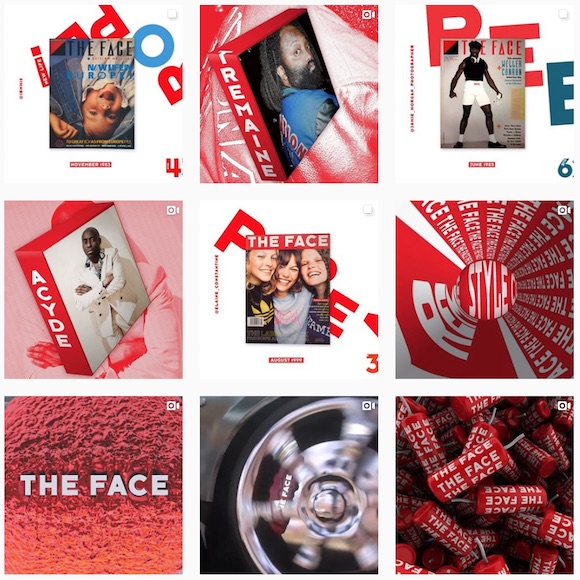
In my twin capacities as “biographer” of The Face and curator of last year’s British independent magazine exhibition PRINT!, I’ve been asked publicly and privately for my thoughts on the imminent online relaunch of the title (the plan is that the quarterly physical edition will follow in August, carrying a September dateline).
So here they are:
It’s interesting that the greatest anticipation for the magazine’s return is being generated for and by the fashion community. The PRs, writers, stylists and students who kept the flame alive after the publication’s 2004 demise are now busily banging the drum in response to the relaunch’s oddly one-note Instagram branding exercise, filling their feeds with excited content.
Meanwhile, Louis Vuitton men’s wear designer Virgil Abloh is being brandished by The Face‘s team as the prime example of a cross-disciplinary subject for the magazine; in fact, Abloh is just the latest in a long line of fashionista interested in such related areas as interiors and product design (having studied civil engineering and architecture). And the first major promotional exercise to coincide with physical publication will be a collab with Alessandro Michele for Gucci’s pre-autumn 2019 collection, which means that the title will re-enter the world in firm lockstep with the fashion industry’s seasonal cycle.
The mainstream media has responded accordingly. Thus far, the most extensive piece on the relaunch is at The Business Of Fashion while The New York Times commissioned not an American media business journalist but British fashion writer-turned arts specialist Charlie Porter to write a thoroughgoing (on the basis of the few shreds of information) article for its Style section.
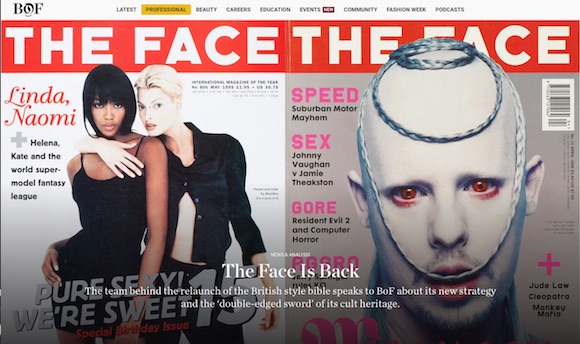
//From The Business Of Fashion//
While Wasted Talent, which also publishes Kerrang! and Mixmag and acquired rights to the title from Bauer Media for £100,000 two years ago, has emphasised that the new version will not be solely fashion-based, perception is all. WT must know it would be a mistake to put all The Face’s eggs into the fashion basket. That section of print publishing is oppressively overcrowded and readers and advertisers respond only to new titles which pull out all the creative stops – see the astounding “issue zero” of dazedbeauty.com’s expansion into print for a current example.

//Astounding. Dazed Beauty’s entry into print with the so-called “Issue Zero”//
As ever, advertising will be the knotty issue for WT. The Face’s survival as an independent between 1980 and 1999 relied on a unique pre-digital era business model of charging premium (and I mean very high) page-rates to offset relatively low subscription and circulation income.
The justification was that advertisers were hitting up the world’s most significant taste-makers. This was at a time when vanguard ideas took months if not years to percolate through to mass audiences (as opposed to now, as social networks chew up and spit out the latest information on what used to be quaintly referred to as “lifestyle” within seconds). The structure did well to hold for at least a decade-and-a-half, and, by the time The Face was sold to Emap in the late 90s, ad rates were already dropping to competitive levels.
With ad spends in traditional areas such as TV and print ebbing away to the likes of Google and Facebook, WT has an almighty job on its hands persuading agencies that the new title will be seen by all the “right people”. And their digital-savvy clients will require projections not just for the first issue (which will be bought by everyone with a passing interest), but the third (traditionally, the sixth monthly edition is the one which may betray serious slippage from the business plan, so I’ve made an adjustment here since this is a quarterly), the fourth, the sixth and the eighth. Straying from targets will unnerve agencies and result in cancellations. Nobody – particularly in the utterly fickle world of advertising – likes to hang around a bad smell.
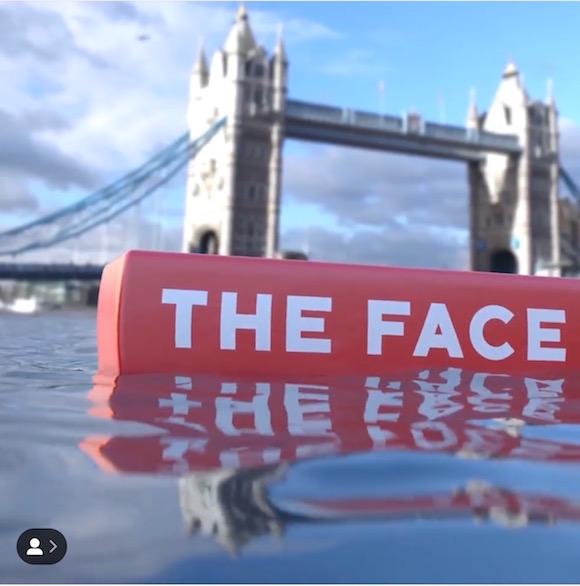
//Still from one of the stories on The Face’s IG feed//
It is important to understand that, throughout The Face‘s existence, particularly the most successful phase under founder Nick Logan’s stewardship, it was that old-fashioned beast, a general interest publication: the latest developments across advertising, architecture, celebrity, contemporary art, design, film, media, music, photography, pop culture, sport and social and youth issues were granted equal scrutiny.
Herein lies the principal danger for the publisher. The financial crash of 2008 and the onset of the digital era made niche creatures of us all, particularly the 15- to 30-year-old target audience which is already being served so well by independently-minded titles the world over. If, as The (new) Face editor Stuart Brumfitt suggests, the plan is to emulate the original and cover the waterfront, then it will find that, say, the key societal concerns of our day – diversity, identity and migration – are already being impressively addressed by an exhaustive list of titles, including but not restricted to Accent, gal-dem, Migrant Journal, No Man’s Land, Orlando, Riposte, Suspira and THIIIRD.
Want fashion, either relatively straight (Buffalo Zine, Beauty Papers, Fantastic Man, Paris Vogue, System) or integrated into all manner of journalism with a post-feminist twist? The Gentlewoman, Mushpit, Twin, The Skirt Chronicles and so many more are supplying those needs in a variety of distinctive ways, as are the likes of Delayed Gratification, Positive News and Weapons Of Reason in terms of current affairs analysis and reportage.
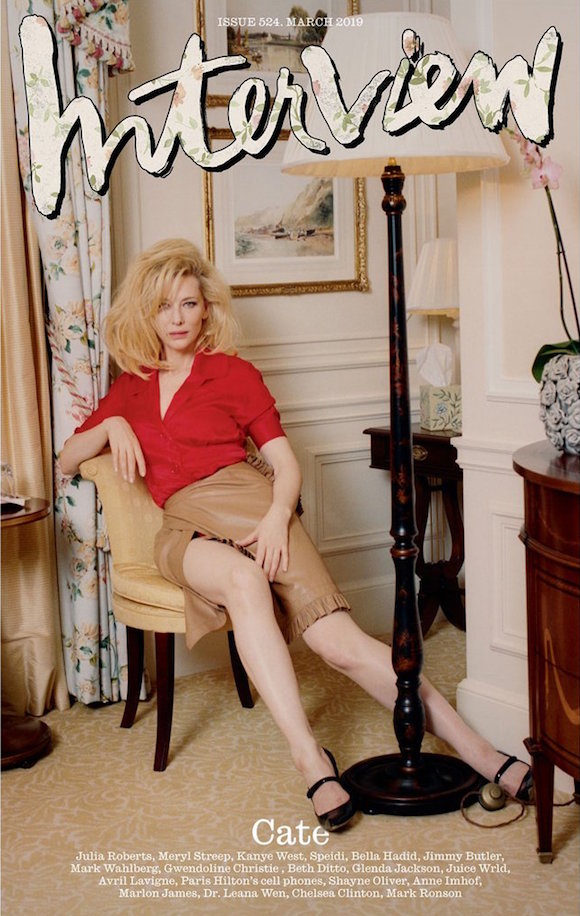
//The relaunched Interview has taken on a 26.5 x 42cm format for its latest issue//
And then there are those mags which are shifting the intelligence in their chosen fields through similar energy and invention in terms of content and format innovation. Many bear the silent influence of The Face: 032c, apartamento, Aperture, Electronic Sound, the relaunched Interview, MacGuffin, Monocle, Wallpaper…
Not that this should deter those planning The Face‘s rebirth, but I anticipated more gusto from a team looking to revive the spirit of the gutsy magazine which tackled everything from the roots of house music in Chicago’s gay club scene and the uptake of Ecstasy on the football terraces to the national British miner’s strike of the 1980s and the rise of the right across Europe and gang wars in LA in the 90s. After all, Logan’s initiative in going ahead with his title may be summarised in his two-word response to publisher Emap when executives rejected his proposal 40 years ago: “Fuck you.”
This was a publication which exuded attitude, an aspect absent from the current round of bland pronouncements and in particular the initial branding campaign. And I can’t quite rid myself of the feeling that the dilly-dallying over the timing of the reintroduction of The Face in print connotes unnecessary caution. I understand the need to recruit the right, er, faces, but publishing in this realm is a hold-your-nose-and-leap-in activity. As an editor of mine was prone to say come deadline time: “Get fucking on with it.”
A launch 18 or even 12 months ago would have not only been a cutting edge move but communicated commitment. In today’s turbo-charged media environment, everyone from Facebook to Fred Perry is quite sensibly joining the print fray, which means that physical uptake is becoming a predictable business maneouvre (something that could not be said about The Face on its day).

//Porter’s article in this weekend’s New York Times style section//
That these are brand extensions is indicative. Alongside Brumfitt, the relaunch is being steered by a couple of veterans: British brand expert Dan Flower and adman Jason Gonsalves, whose astonishing blunder in the NYT signalled a serious underestimation of the new title’s potential readership. “One story I find fascinating is Cambridge Analytica,” Gonsalves loftily informed Charlie Porter. “Few of our audience really know anything about that [sic], yet it’s so relevant to them.”
Hold up, Grandad, and take the word of someone who has bothered to investigate contemporary independent magazine publishing from the points of view of the producers and consumers: the current generations of teens and 20-year-olds are the most politically engaged since my own hard-marching days of the 70s, and they don’t appreciate being patronised, particularly about a story which was whistle-blown a year ago by two young people bang in the magazine’s target audience: 24-year-old Shamir Sanni (31k Twitter followers) and 29-year-old Christopher Wylie (126k). A crucial aspect of The Face’s success in the 80s and 90s was that it never talked down to its readers. It would serve Wasted Talent well to keep that in mind.
I’m not involved in the relaunch, haven’t been asked and nor have I the time or inclination. This is a young person’s game and the writers, designers, photographers, stylists and editors must cultivate the trait shared by their estimable predecessors from Ashley Heath to Inez & Vinoodh: enthusiasm. I am by nature and profession a skeptic, so not what is required.
But I was happy to receive a request to talk about a favourite cover for the online launch (“Destroy”, February 1986 since you ask) and audibly groaned when I heard that there is to be an archive section “for the older people who loved The Face the first time round”.

//From the Aftermath chapter of The Story Of The Face, published November 2017)
My message to Brumfitt and his crew is: forget us. We’ll only drag you down. The Mojo-isation of popular culture has long blighted its media (here, one notes, WT is owned by former Bauer publisher Jerry Perkins, whose purview included Mojo, Q, etc).
Enough looking back. The bogus cultural nostalgia of such charlatans and frauds as Banks, Gove, Farage, Johnson and Rees-Mogg (disgustingly, all younger than me) has plunged us into the country’s current political and social mess. There is a trail leading from Brexit to the backward-looking and jingoistic materialism of Britpop, ironically one of the factors which buried the original version of The Face…
This is on the nose. When The Story Of The Face was published, my response to the repeated question as to what I would do with The Face was that, along with climate change, it should focus on Brexit and all the attendant repercussions, since these will impact the magazine’s target audience for the rest of their lives whether it happens or not. Adopting the scrupulous political and moral stance was one of the aspects which marked The Face out from the pack, and it pertains now just as it did during the Tory misrule which bore down hard on us over the first 17 years of the magazine’s existence.
As well as proposing that a new masthead be obligatory (the relaunch will carry one of the 90s logos) and an insistence that none of the previous staff, in particular the designers, should be involved, I suggested that, since young women and non-binary people have propelled print publishing in recent years, the editor of a new version of The Face should come from their ranks.
My view hasn’t changed. While it is laudable that Brumfitt’s team is sexually and racially diverse (and he has a fantastic story about his anonymous letter published by the magazine when he was 16 and afraid to declare himself as gay), the installation of non-males at the top would not only have allowed access to the current exemplary crop of young female/non-binary journalists and editors but simultaneously plugged into the gender blindness of the Logan years. After all, the greatest editor of The Face was Sheryl Garratt, no argument.
//Nick Logan talks about launching The Face in 1980 in this clip for PRINT! Tearing It Up, the exhibition about independent British magazines I co-curated at London’s Somerset House last summer//
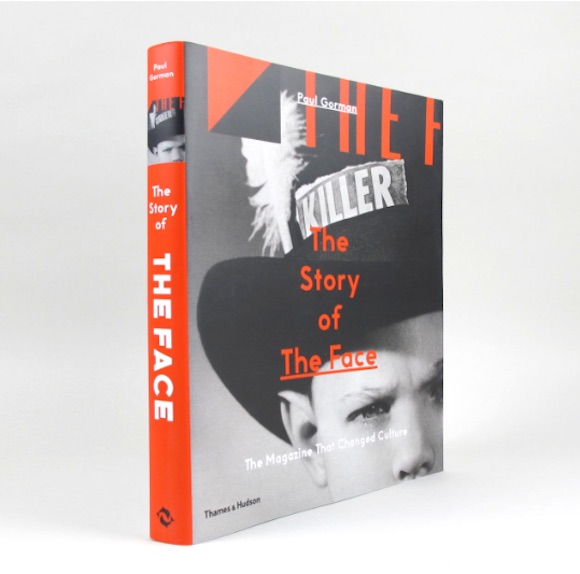
//My book about The Face, published by Thames & Hudson in 2017//
In my 2017 book, Garratt observed that a key element of The Face was its politically (with both a small and capital “P”) oppositional stance. There is scant information available on the new version of the magazine, but it is to be hoped that it resumes this struggle against the doctrinaire, wherever it surfaces. But this wish brings an itch I must scratch. Surely that job is already being done, across a vast range of contemporary titles which don’t rely on the past?
Maybe not, and there will be space for The Face once again.
For what it’s worth I wish The Face, Brumfitt and his team well and will be waiting in line at my local newsstand, just as back in the day, to get my hands on a copy hot off the presses.
* * * * *
Magculture’s Jeremy Leslie and Liv Siddall, an editor/writer who has been at the forefront of the new print generation, discuss The Face relaunch during their latest podcast here.
I’m pleased The New York Times paraphrased the title of my book for the online headline for Charlie Porter’s article. Read The Return Of A Magazine That Changed Culture here.
The Independent plumped for a variant. Read The Face Returns: What You Need To Know About the Seminal Magazine That Transformed Culture here.
The Business Of Fashion covered the plans here.
The Story Of The Face: The Magazine That Changed Culture is available here.
